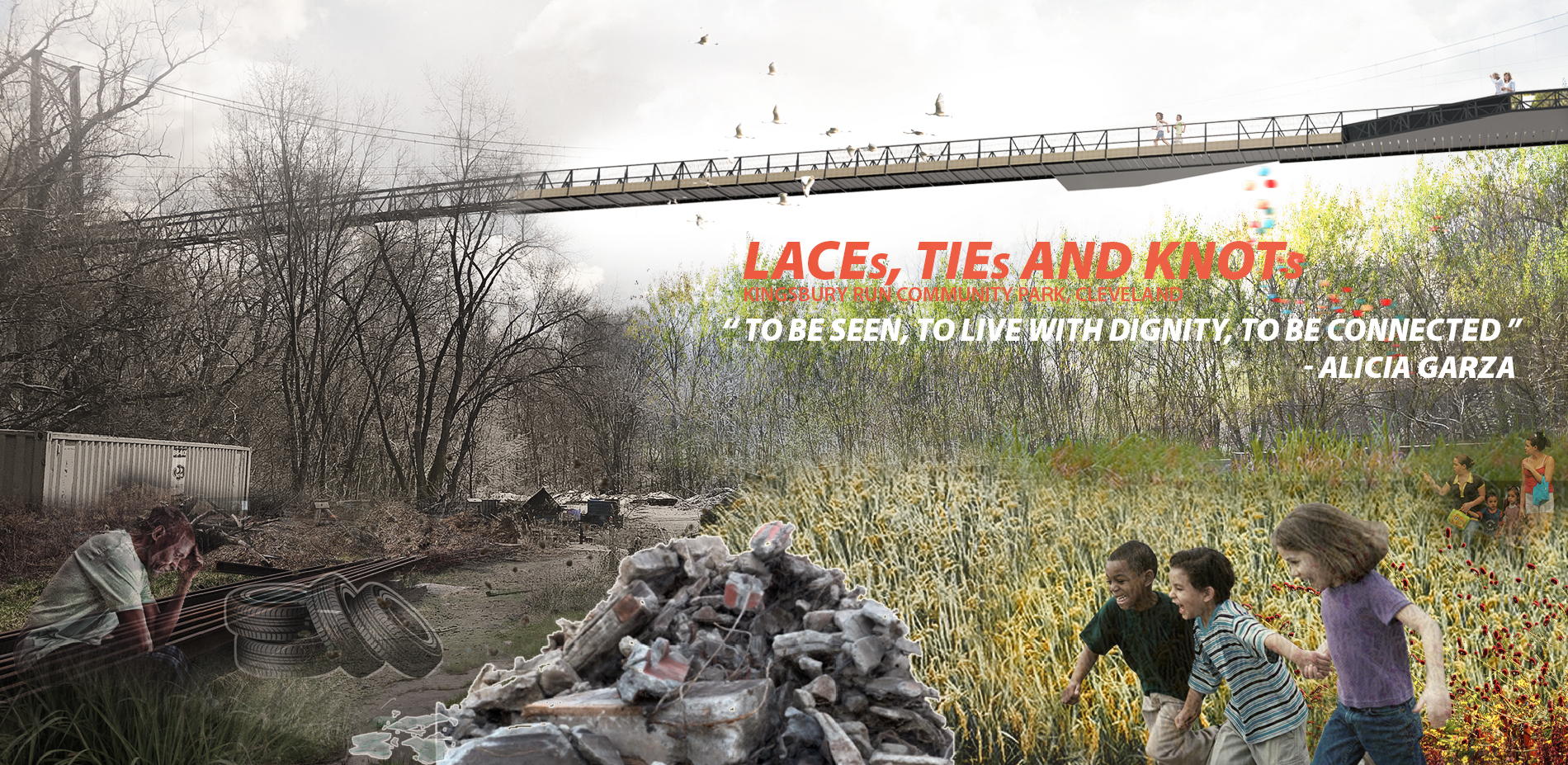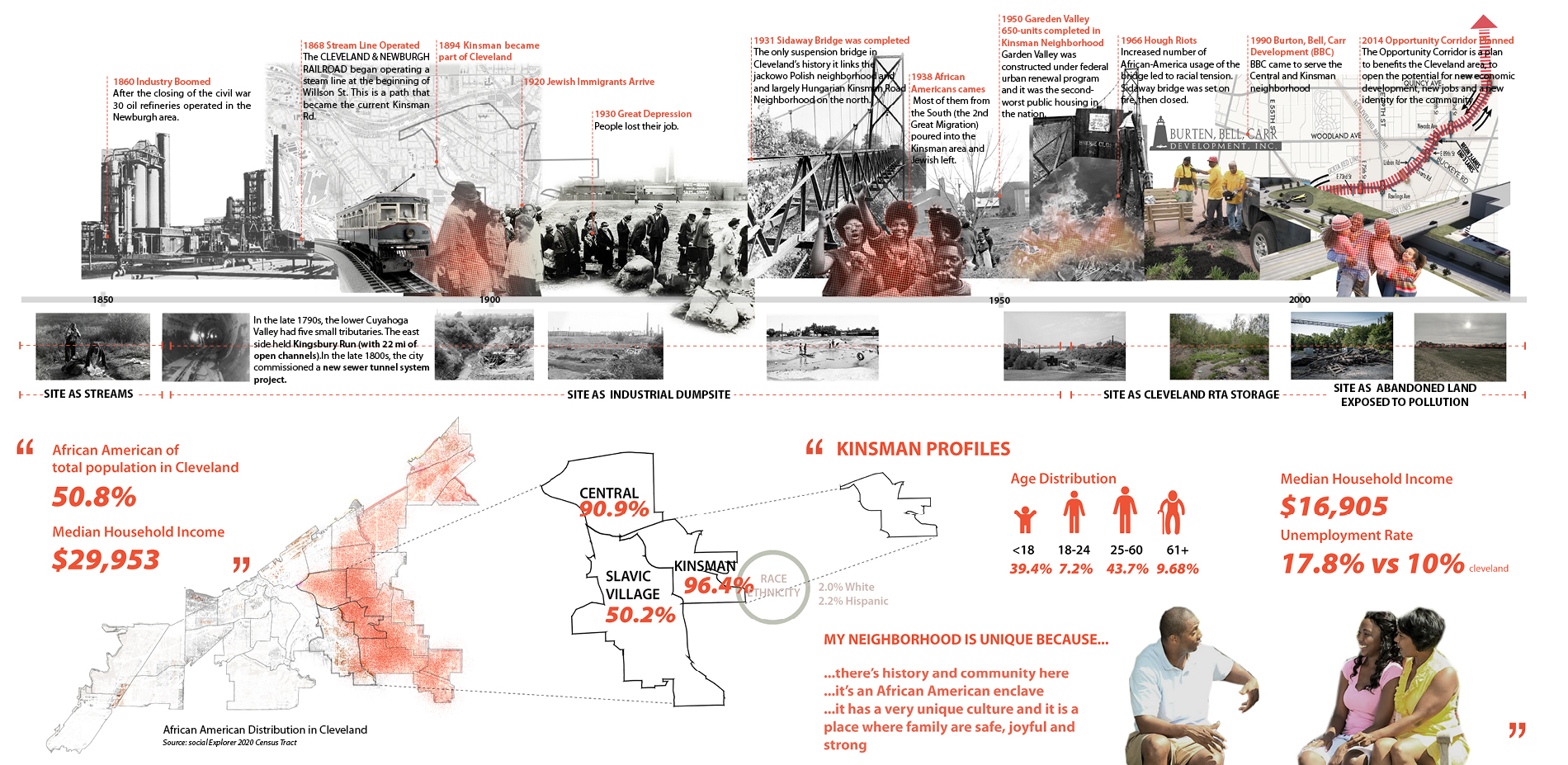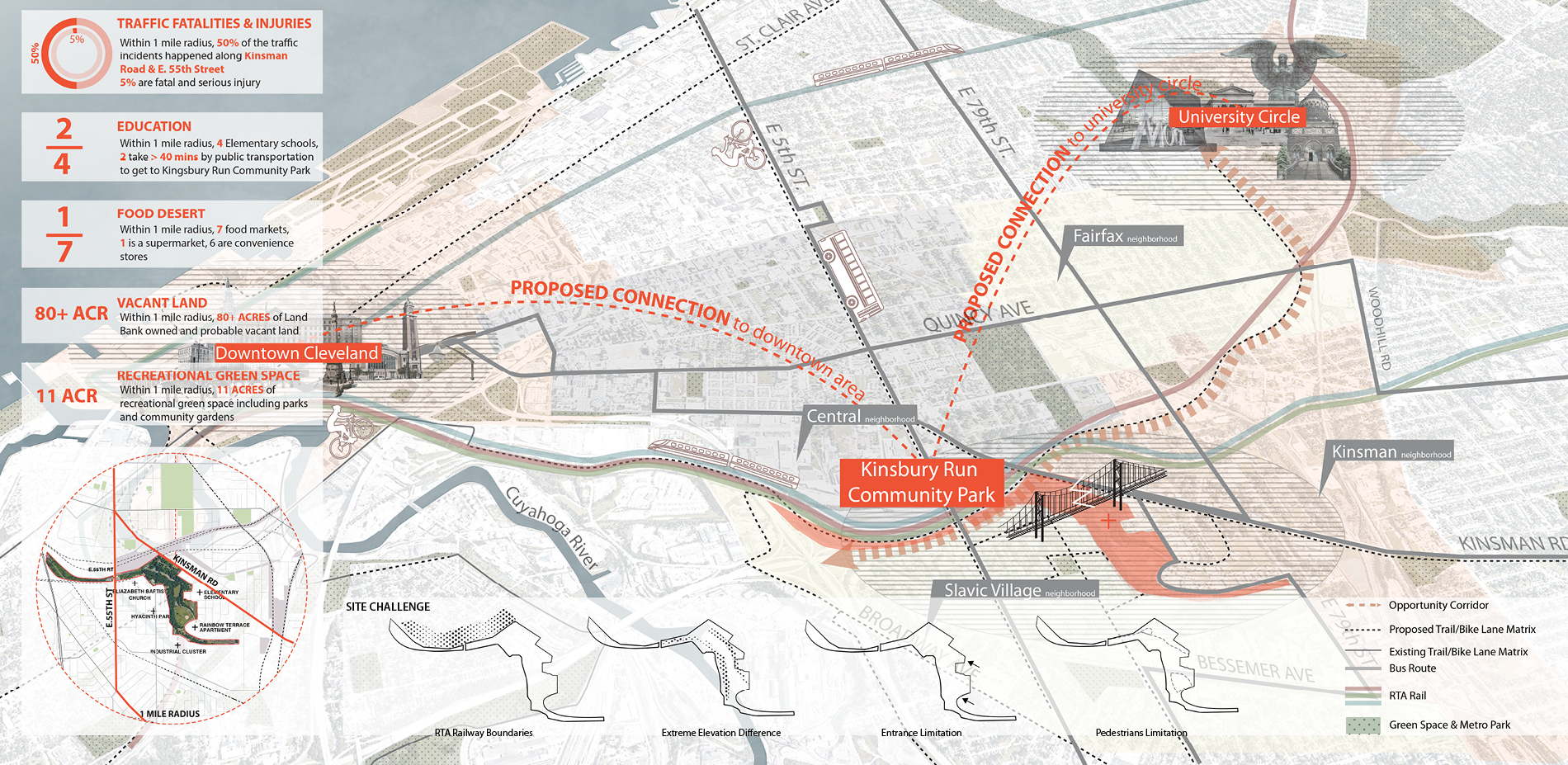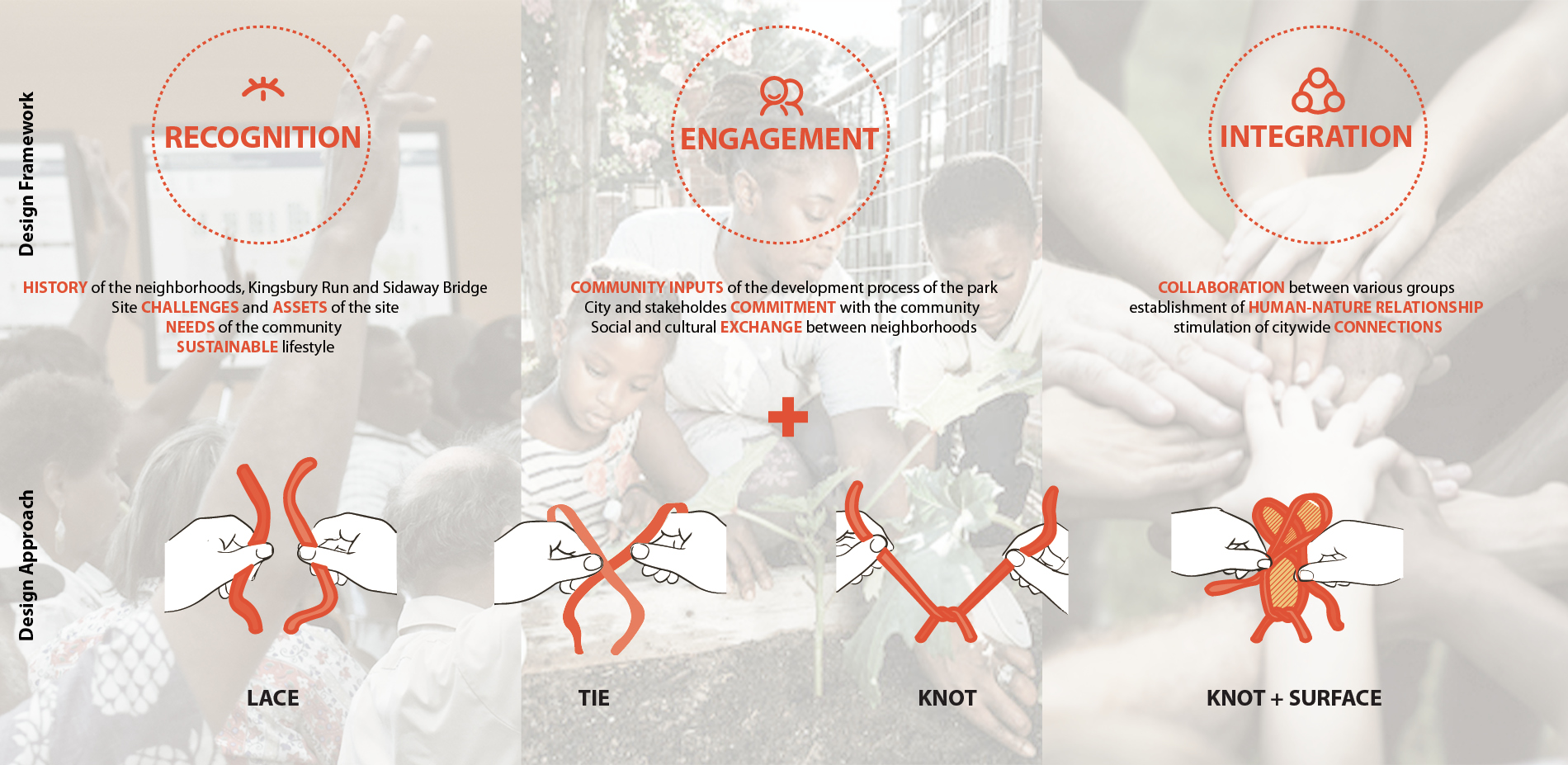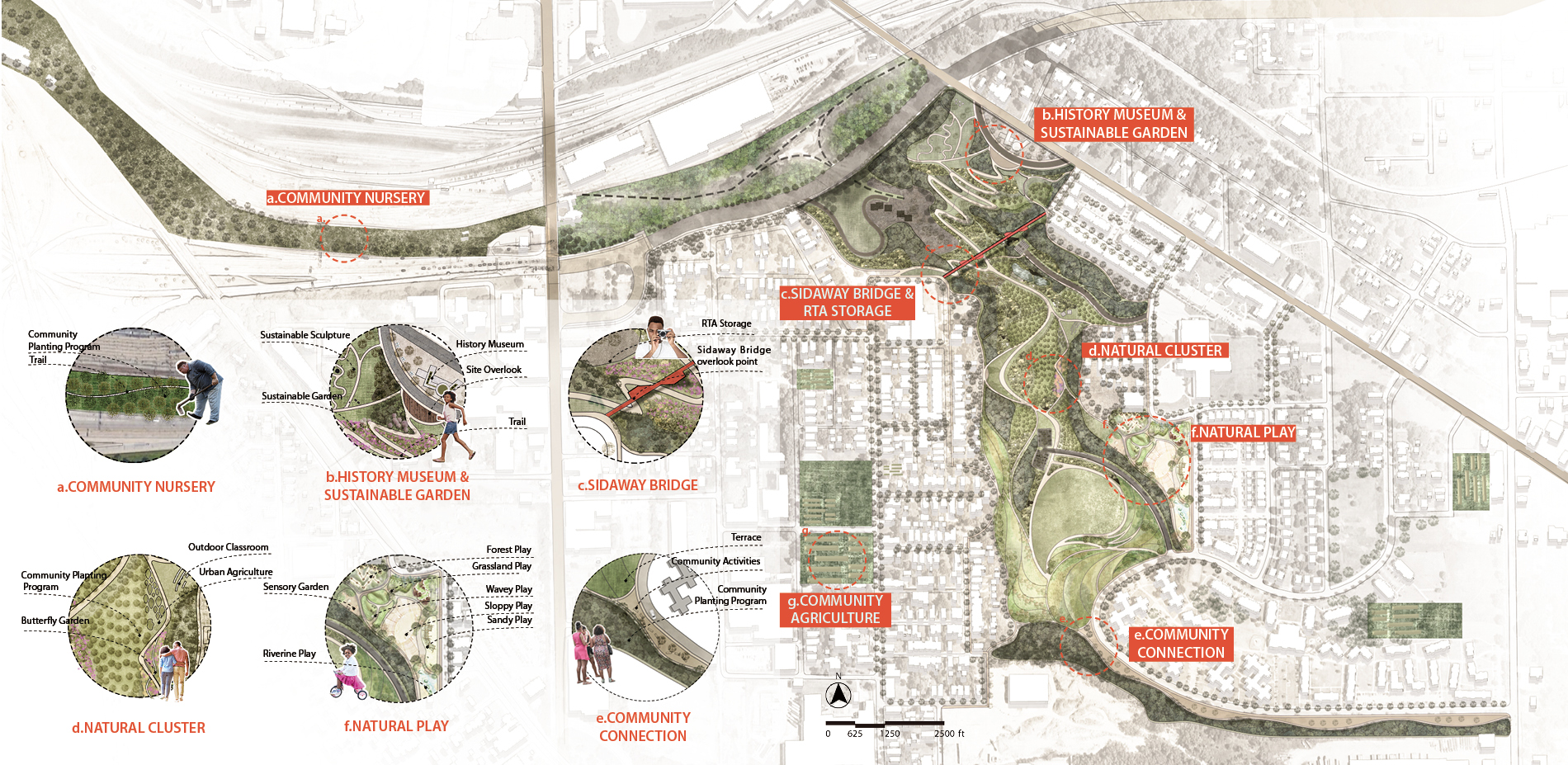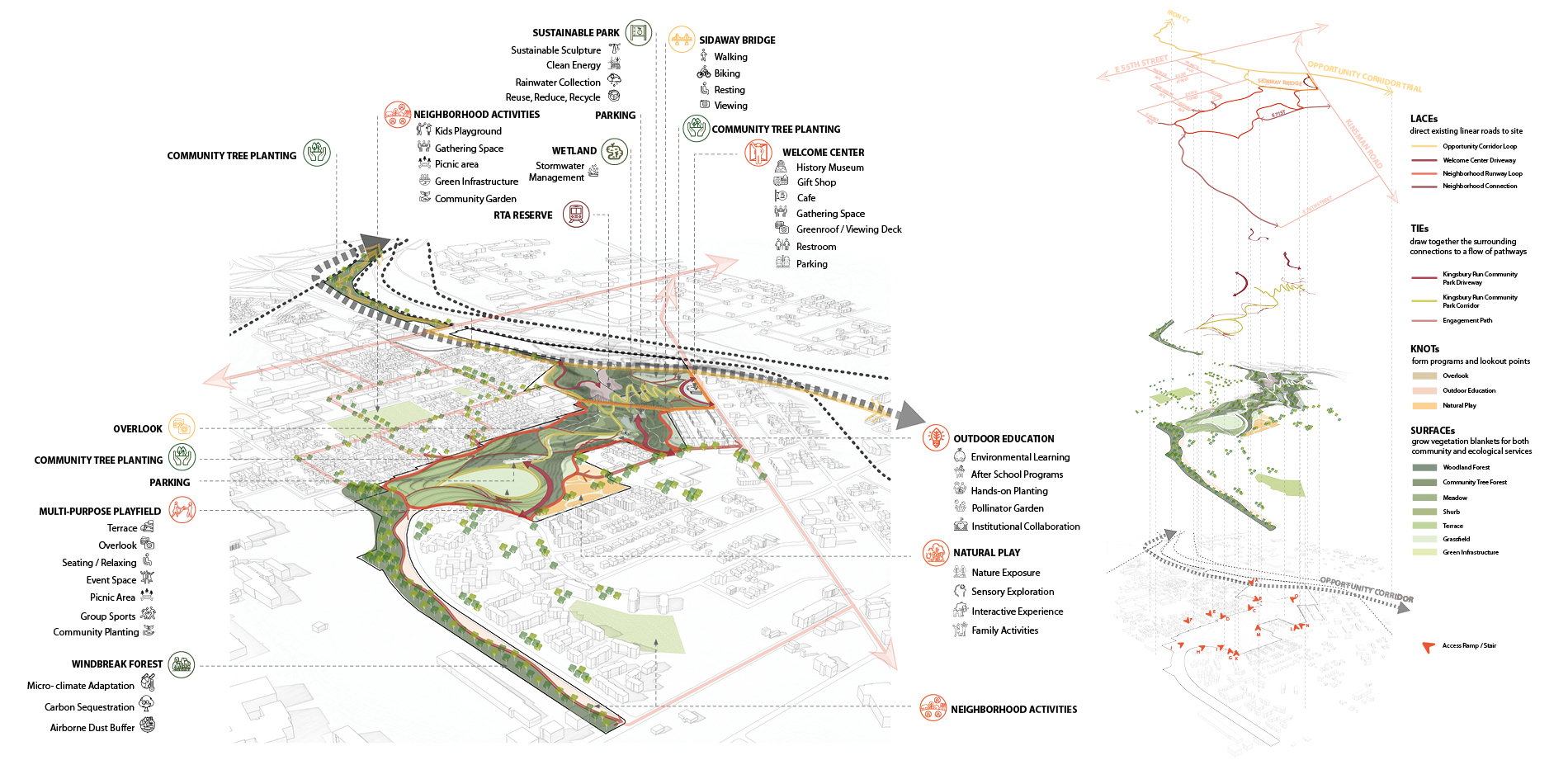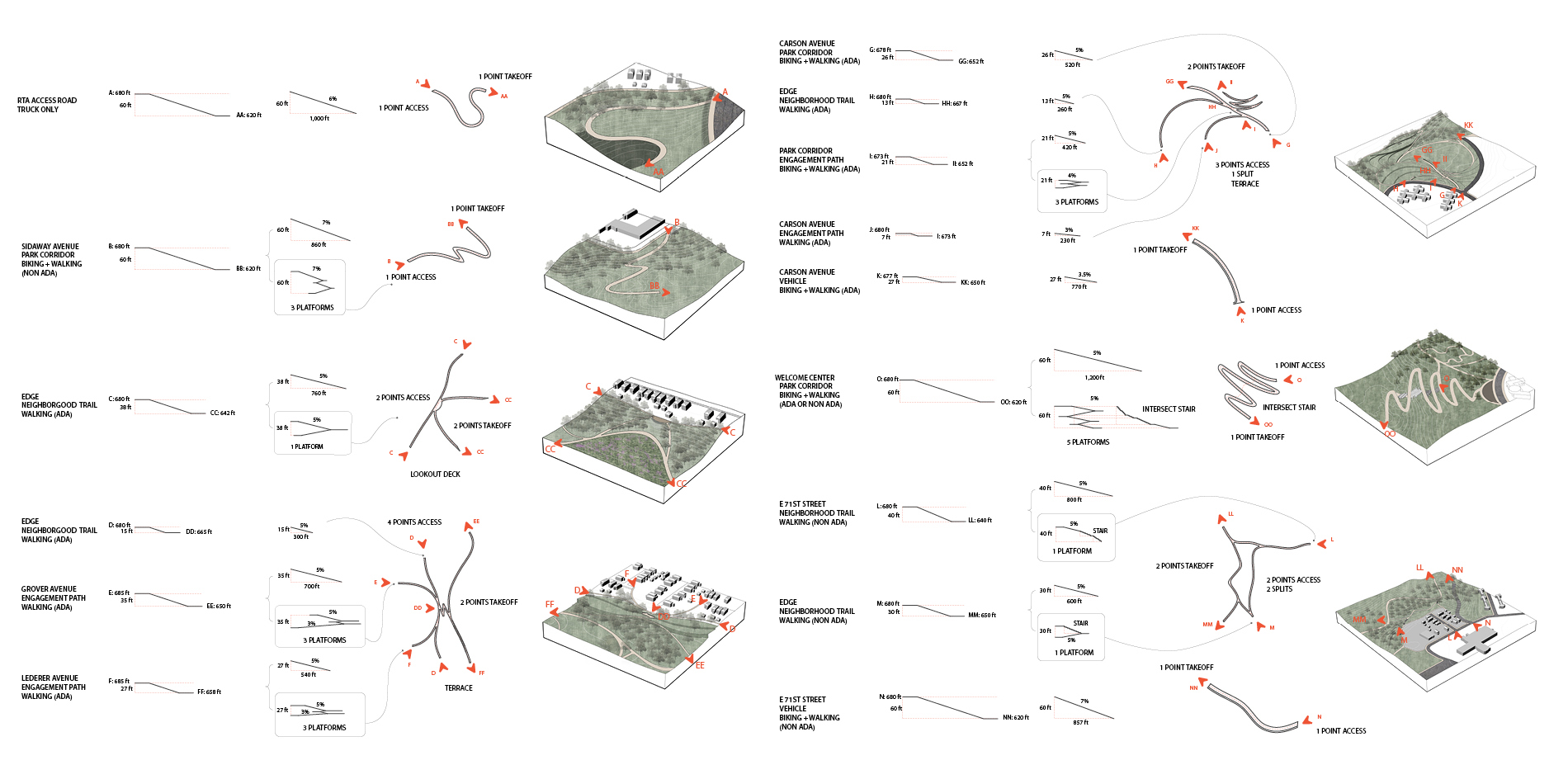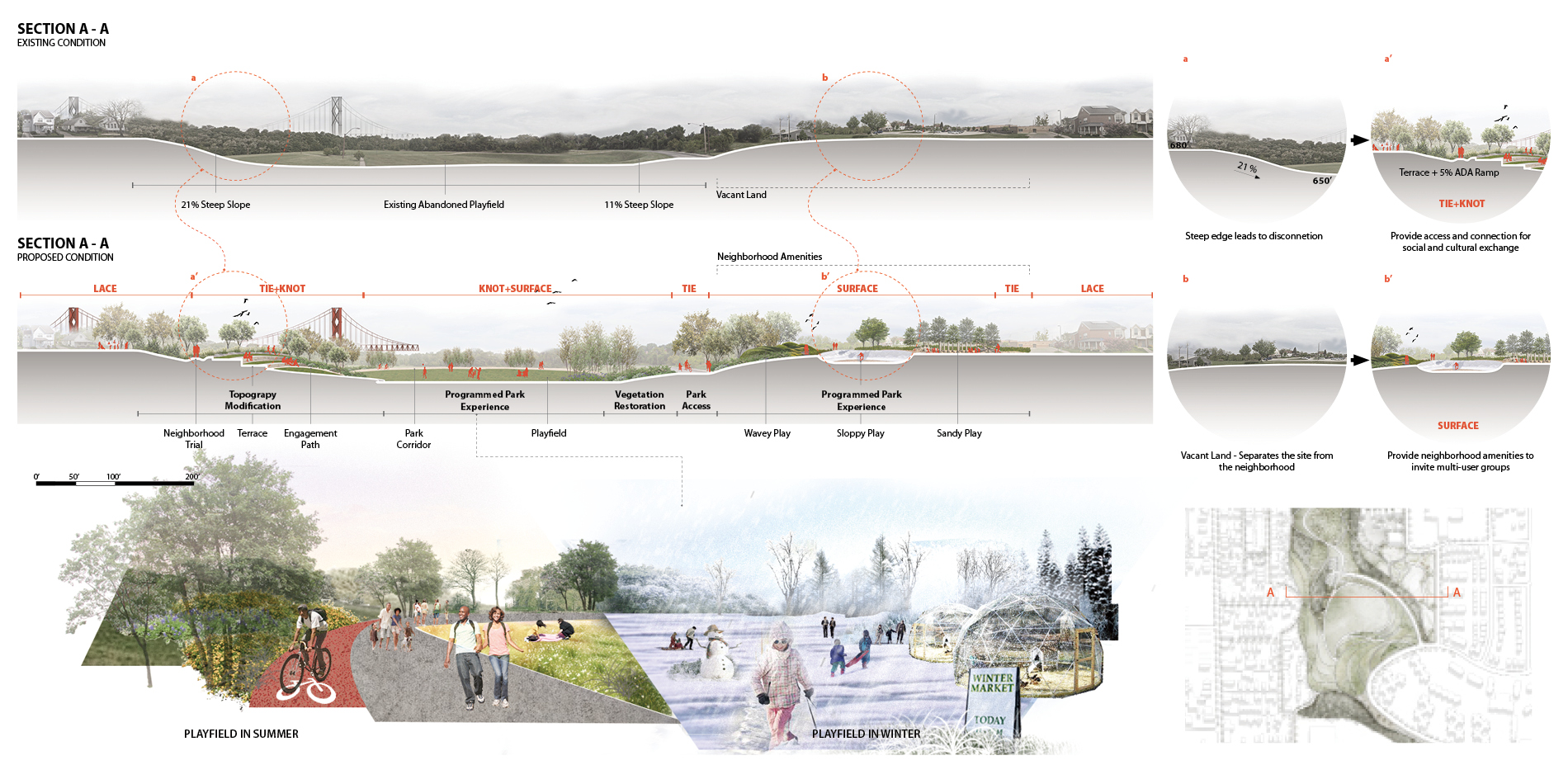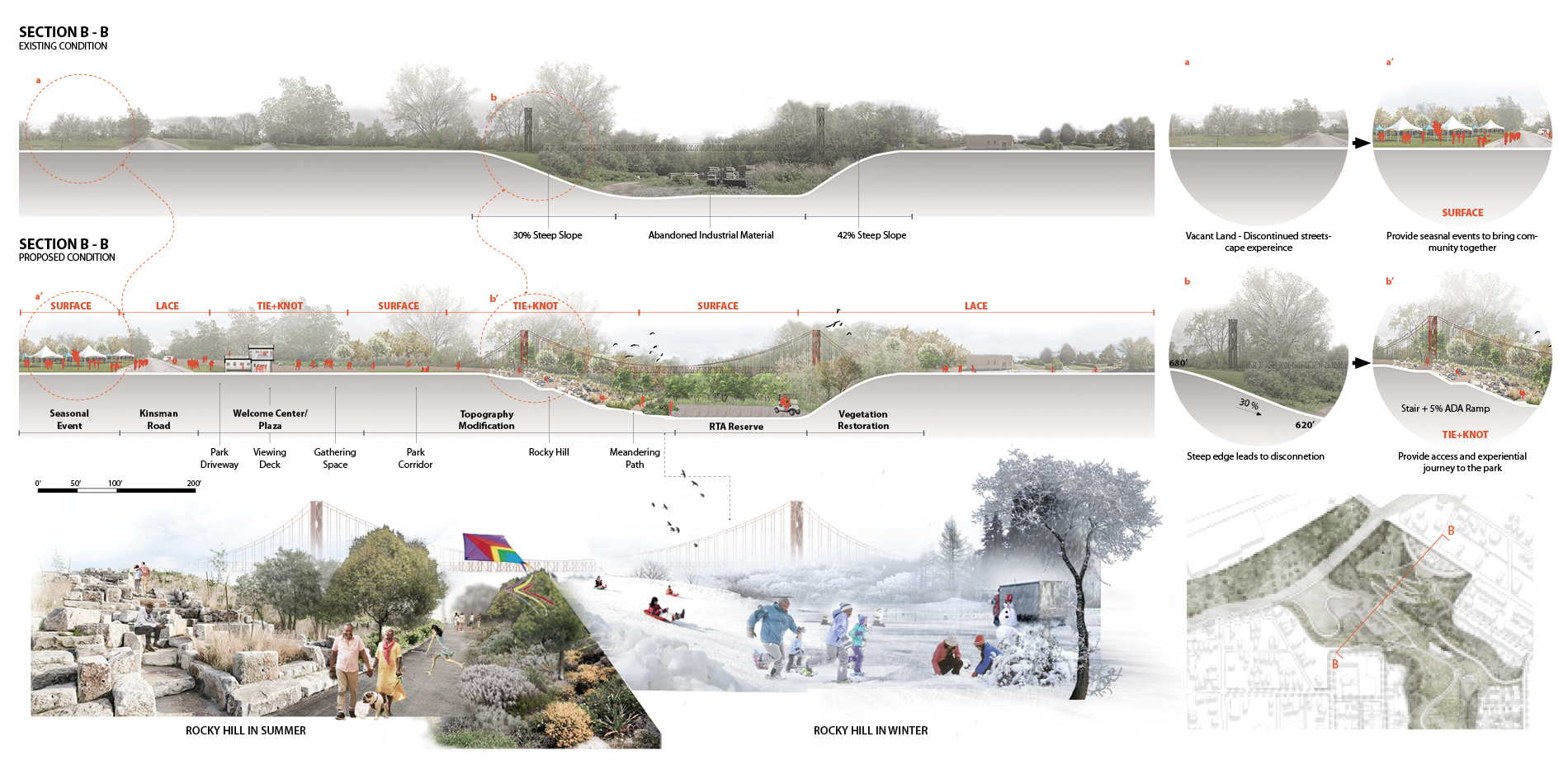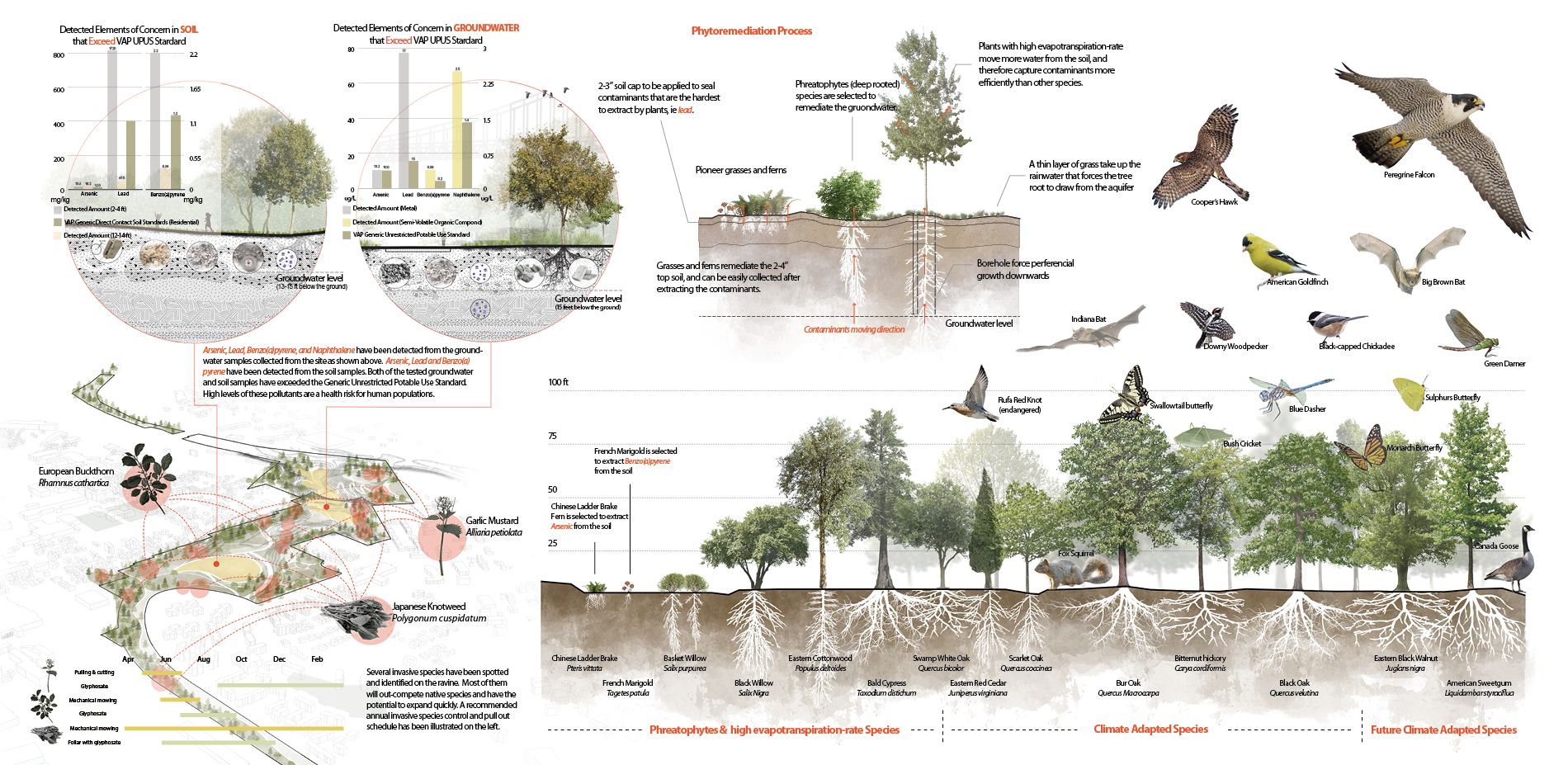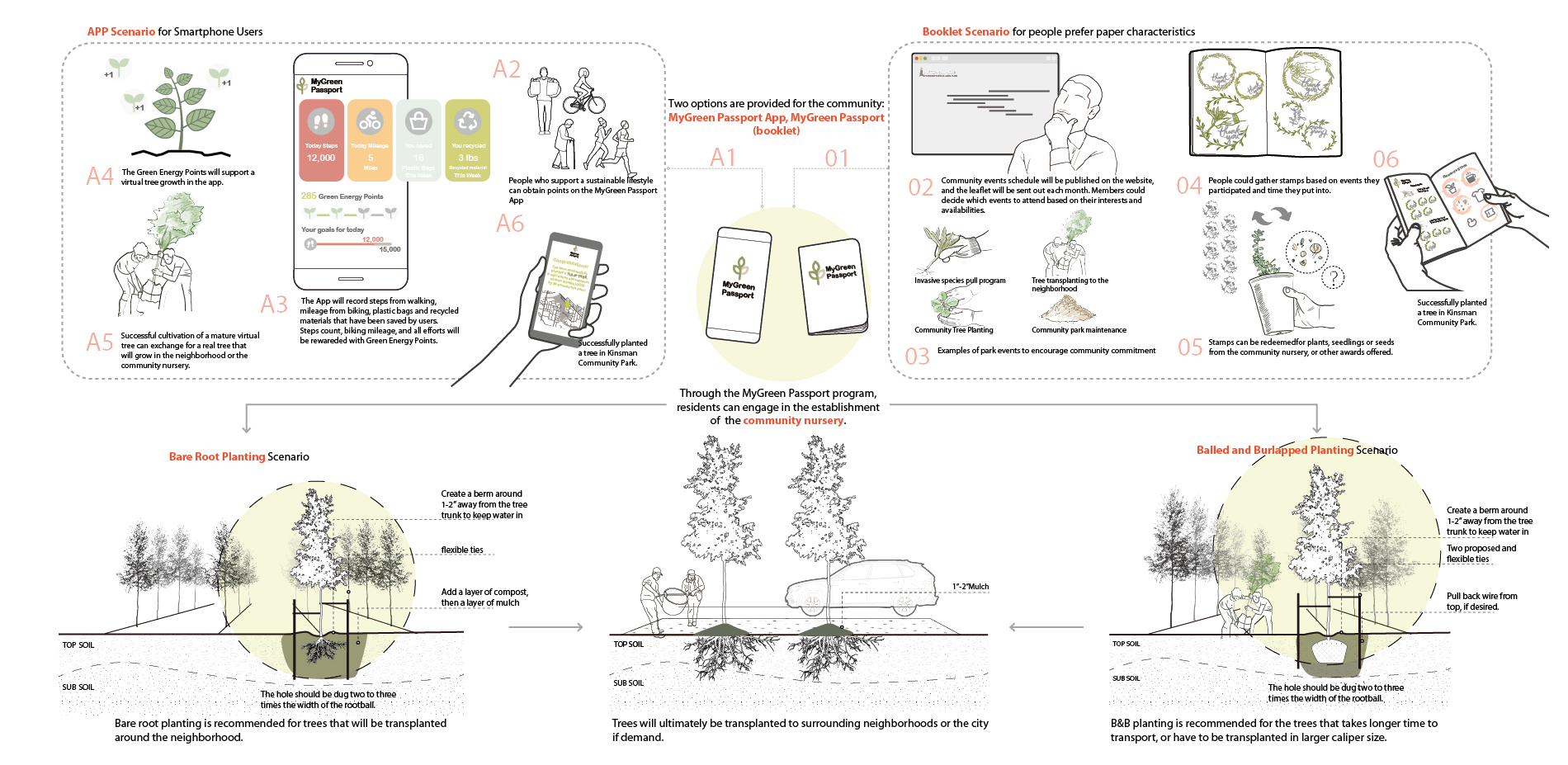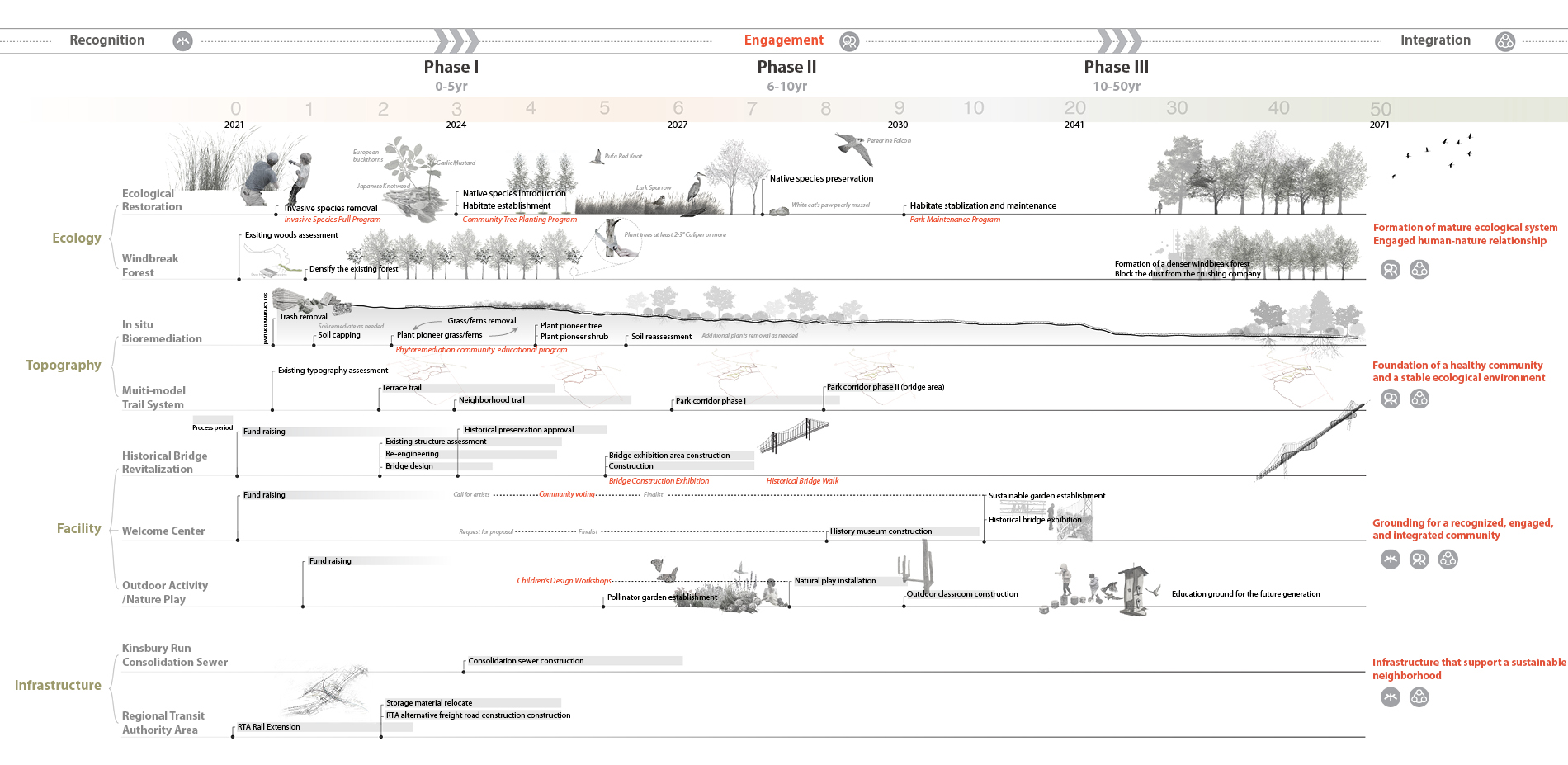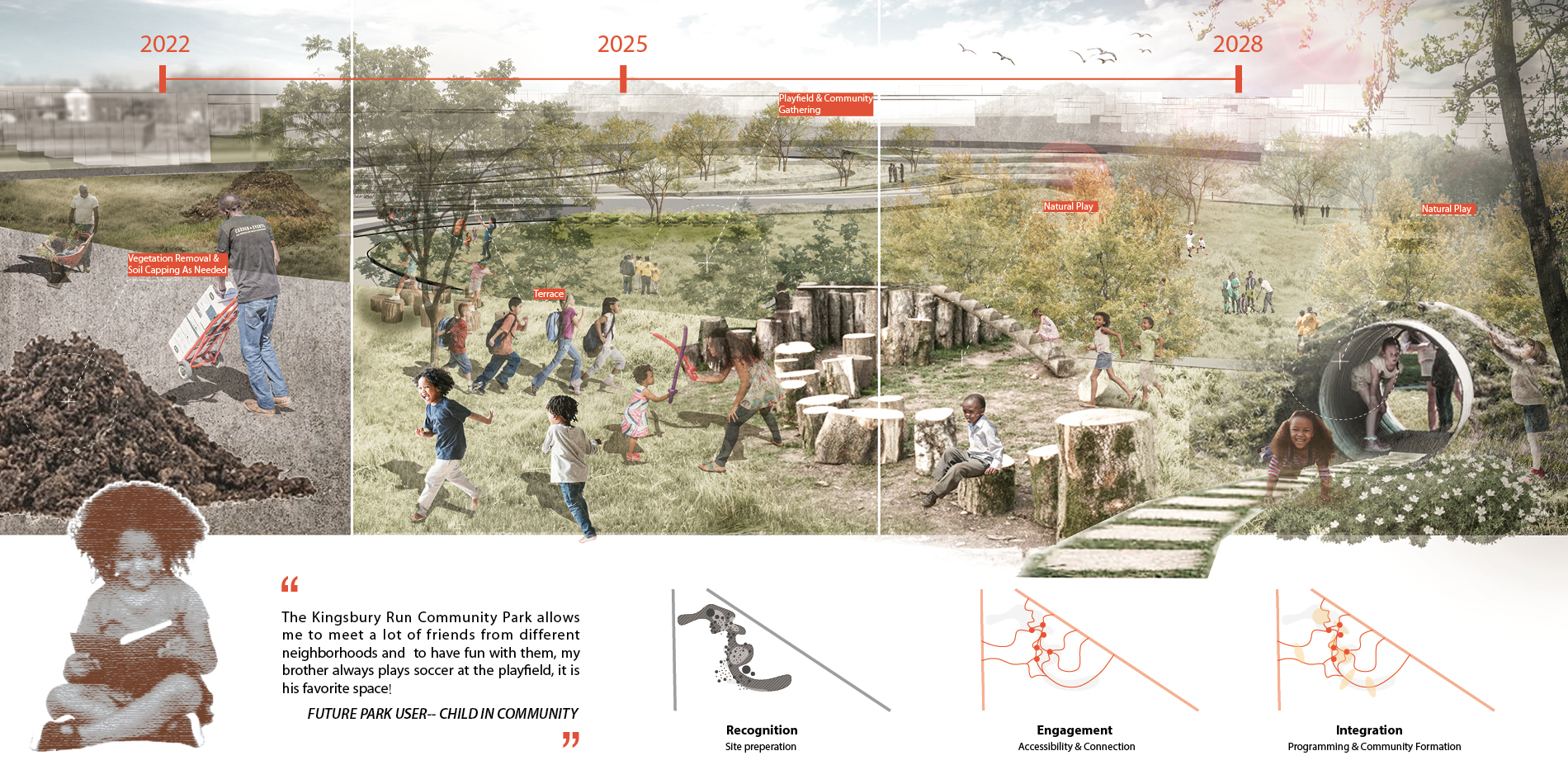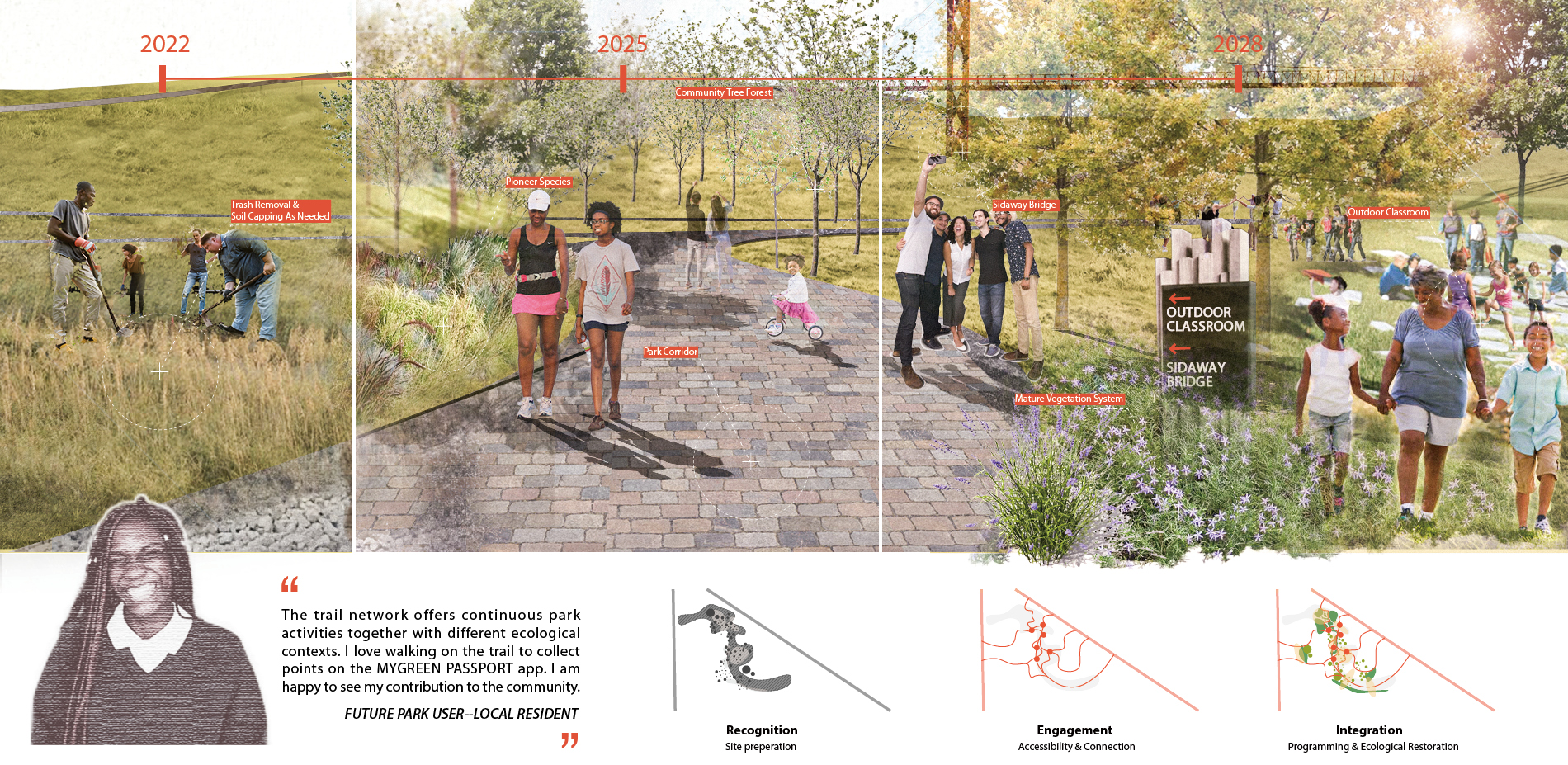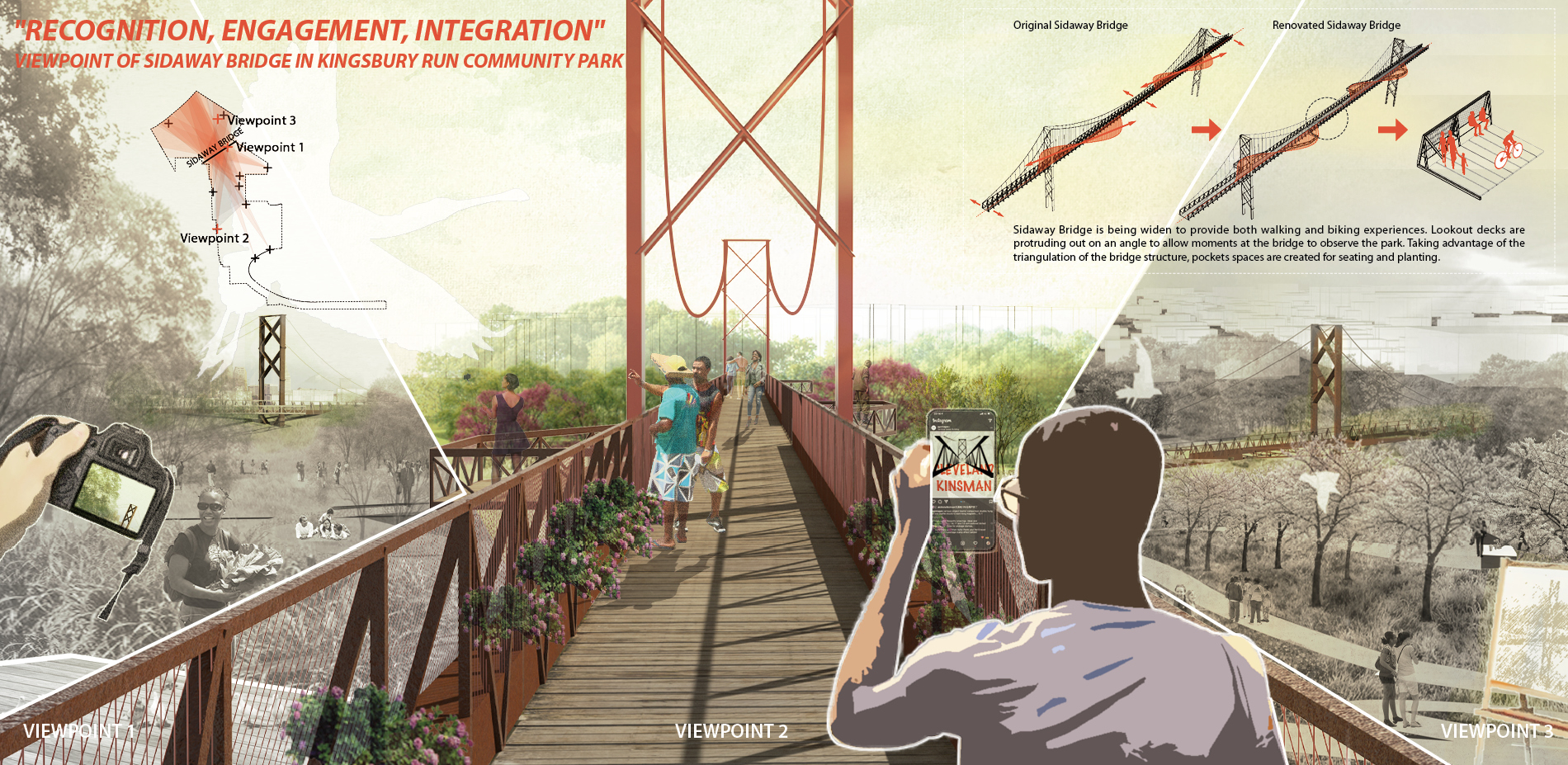Laces, Ties and Knots
Honor Award
General Design
Cleveland, Ohio, United States
Shanni Jin; Xinyue (Hope) Shen, Student ASLA; Lai Ching Tsui, Student ASLA
Faculty Advisors: Mitch Glass, ASLA
Cornell University
Inspired by Alicia Garza’s quote, LACEs, TIEs and KNOTs envisions a process to mend communities in the Cleveland area that have become disconnected due to environmental racism. The project is an impressive example of community engagement and collaboration, with great potential for transformation. From the beginning, this group’s sophisticated phasing process—with its focus on community and ecology—came with a depth that was beautiful and comprehensive.
- 2021 Awards Jury
Project Credits
Burten Bell Carr Development, Inc.
Client and Partner
Yvette Pollack
Communication Assistant
Project Statement
Kingsbury Run, an abandoned landfill in the heart of the Kinsman neighborhood in Southeast Cleveland, has long been neglected and labeled as a brownfield site. Despite its current appearance, it was once an ecologically rich watershed. Presently, this land is perceived as an eyesore due to it’s embedded history of precariousness, segregation, and racism. This negligence has created opportunities for nature to take over. Wildlife and flora has repopulated the land, including invasive plant species. It gives the sense of wilderness within an urban setting. Laces, Ties and Knots proposes to establish a new relationship between the people in the Kinsman neighborhood not only with nature, but also with the entire city. The project envisions a process which restores the disconnected communities as the result of environmental racism and creates a comprehensive social, cultural, and ecological unity, through revitalizing this forgotten site.
Project Narrative
“To be seen, to live with dignity and to be connected.”
- Alicia Graza, American civil rights activist and co-founder of the international Black Lives Matter movement
Having been inspired by this Alicia Graza quote, the goal of this proposal was to offer landscape architecture as a new lens to effect social change in communities. Working with and for the people in these communities, we wanted to help them develop a positive relationship between man and nature to enact environmental justice. In turn, this would uplift the people’s well-being by breaking a barrier between city people and nature.
Kingsbury Run was once a natural watershed that flowed through Southwest Cleveland, to the Cuyahoga River, and then westward towards downtown. The natural streams were culverted into combined, municipal sewer systems. Industry boomed in this area, including the crude oil refinery and steel mill, as well as transportation / freight uses to move. Kingsbury Run became polluted, dangerous and disreputable. The natural landform of the ravine in which the site is situated created a deep, rugged, bowl-like valley. The top soil was contaminated with all sorts of industrial pollutants including slag.
The construction of the Sidaway Bridge, the first and only suspension bridge in Cleveland, was meant to provide a place for connectivity and social/ economic interaction between the Jackowo Polish neighborhood to the South and the Hungarian Kinsman Road neighborhood to the North. Over time, European communities on either side of the bridge merged and African-American communities moved in. With the mounting racial tension during the 1960s, the Sidaway Bridge was damaged during the Hough Riots, and the city decided to permanently close the bridge. Over the years, after its partial destruction, the Sidaway Bridge has stood as an unintended reminder of segregation and racism in Cleveland. Today, the ravine under the bridge is mostly wild and creates a further divide between these communities.
In parallel with the ongoing neighbrohood plan for regeneration, Cleveland’s “Opportunity Corridor” roadway development project, promises to bring new economic development, job opportunities and identity to the Central / Kinsman / Slavic Village neighborhoods by connecting them with University Circle and Downtown. These are the largest employment and development districts. However, the project's over-emphasis on vehicular mobility has been criticized for its lack of sensitivity to the surrounding neighborhoods. The absence of a recognizable and comprehensive green infrastructure network, fails to address the immediate quests of the communities for friendly, walkable and bikeable connections to community assets. Most importantly, this highway network runs directly through the north section of the Kingsbury Run, which further disrupts the land which has the potential to be the neighborhood jewel.
Listening to the local stakeholders and community members was essential for us to offer a design proposal, which could uphold the community’s priorities. With the COVID-19 travel restrictions, our team was unable to conduct neither a site visit nor a survey. We were thankful to stakeholders and community members who spent time with us on zoom and provided us with a tremendous amount of information that enriched our knowledge and understanding of the area. Community outreach and engagement through zoom meetings helped collect thoughts and insights of what nature meant to them, and they provided feedback on challenges and opportunities of the site from the local perspective. They spoke about providing an inclusive space for all people to elevate the quality of life in a way that would not gentrify the neighborhood and what amenities for people should come first. Our design proposal focused on responding to the requests for the design framework for recognition, engagement and integration.
The proposal - Laces, Ties, and Knots, establishes a stronger and healthier relationship between the park and adjacent communities, between communities and neighborhoods, and between neighborhoods and the city of Cleveland. Kingsbury Run is envisioned as a community park to celebrate a reunion between humans and the natural environment. Understanding the scale of the site, phasing strategies in parallel with the design framework are essential for executing the proposal:
Phase 1 - Recognition - The history of the surrounding neighborhoods, Kingsbury Run and Sidaway Bridge will be revealed. The site’s challenges and assets will be acknowledged and address the needs of the communities. The concept and importance of a sustainable lifestyle will be introduced. Phase 2 - Engagement - Opportunities for community inputs of the development process of the park will be provided to the community to allow for social and cultural exchange between neighborhoods. Phase 3 - Integration - People of various interests, background and experience groups will collaborate. Relationships with nature and citywide connections will be encouraged.
The design framework is explicated on site through the design approach of lace, tie, knot and surface:
Laces (recognize both challenges and asserts of the site)
Highlight the historical significance of the Sidaway Bridge by renovating it to a walkable, bikeable and sociable place. Introduce layers of neighborhood trails around the street level of the site to bring the existing linear road system to the edge of the community park. Work with the existing site topography and exploit the height difference for view shed moments. Sample the existing plants / woods assessment and understand how the soil was capped. Incorporate “50 Actions to Elevate the East” public art program to express the unique character of the area’s people and topography through public art. This will also create innovative experiences with clean energy, rainwater collection, recycling and upcycling.
Ties (engage the site through increasing accessibility)
Introduce ADA accessible driveways and engagement paths that tie into the park corridor. All paths offer access options for driving, biking or walking. Make the park development process more transparent by providing ongoing community engagement workshops, which will allow communities to get involved with the park development process.
Knots (create moments and programmed park experiences)
Allow multi-layer trails to intersect with each other along the slopes to bring about moments of lookout points, resting points and gathering points. Expanding the moments to larger park amenities: playfield, natural play, outdoor classroom, and plaza. Provide the grounds for community activities for all user groups.
Surfaces (establish human-nature relationship)
Initiate climate-adapted plant species for phytoremediation to let nature to treat the contaminants from the industrial past. Densify existing tree layer to build multiple clusters of forest for an airborne dust buffer and sequester carbon. Restore and re-establish vegetation blankets through public participation. Develop a public engagement program to welcome people from different neighborhoods to contribute to the growth of the park forest as well as the growth of the city forest.
The design intervention expresses our efforts on interrelating nature with broader social, cultural and ecological values. This process values community engagement at every level of the development phases. Through inclusive place making, the Kingsbury Run Community Park will bring people together and will become an adored urban asset for all ages, genders, races, and people from all socio cultural backgrounds. It will be embedded with the capacity to get people to recognize themselves in each other and operate as a catalyst that will elevate the forgotten and isolated Kinsman neighborhood to being seen, connected and dignified.
Plant List:
- Chinese Ladder Brake, Pteris vittata
- French Marigold, Tagetes patula
- Basket Willow, Salix purpurea
- Black Willow, Salix Nigra
- Eastern Cottonwood, Populus deltoides
- Bald Cypress, Taxodium distichum
- Swamp White Oak, Quercus bicolor
- Eastern Red Cedar, Juniperus virginiana
- Scarlet Oak, Quercus coccinea
- Bur Oak, Quercus Macrocarpa
- Bitternut hickory, Carya cordiformis
- Black Oak, Quercus velutina
- Eastern Black Walnut, Juglans nigra
- American Sweetgum, Liquidambar styraciflua
- Garlic Mustard, Alliaria petiolata
- European Buckthorn, Rhamnus cathartica
- Japanese Knotweed, Polygonum cuspidatum
